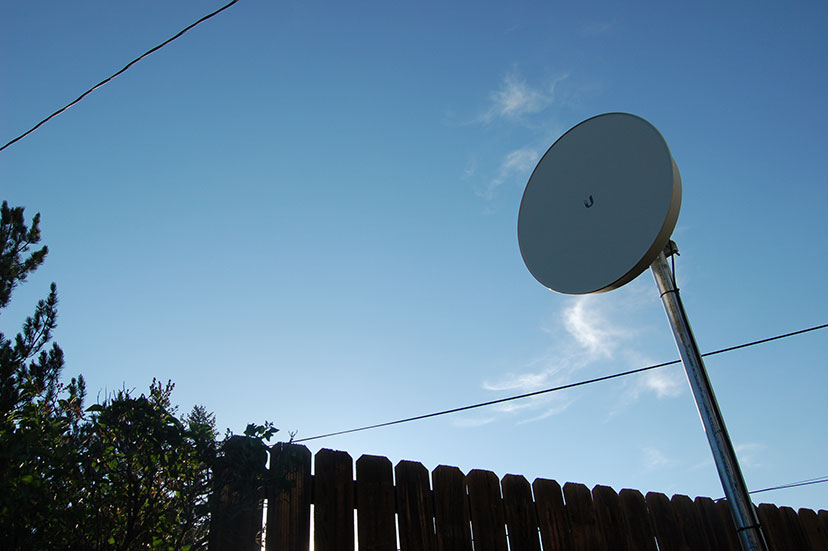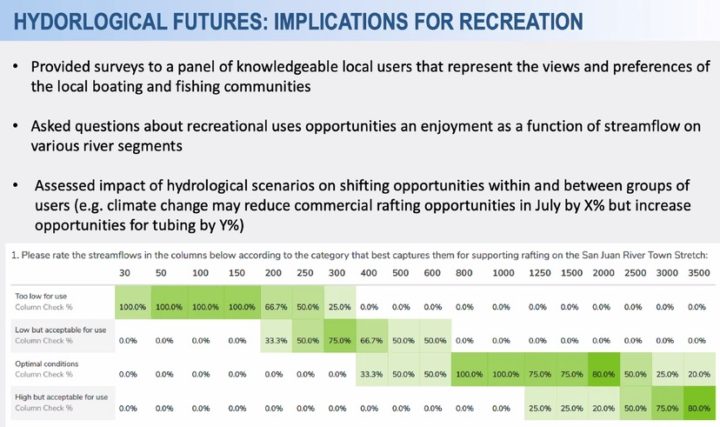A bunch of us had a picnic Sunday at Chrissy’s house, at a table overlooking the San Juan River, enjoying the late spring weather. The river flowed full, and a bit muddy, at about 1,100 CFS (cubic feet per second) thanks to some warmer temperatures melting the last remnants of snow atop the mountains to the northeast. Too fast for tubing. Almost perfect for rafting, though, according to a chart developed by Lotic Hydrological, which we published back in April.
Different flows for different folks, as they say.
Despite the perfect rafting conditions, however, I don’t recall a single raft passing by Chrissy’s yard during our two-hour picnic. Maybe the rafting community is too busy riding the waves on more dramatic rivers, elsewhere in Colorado? Or in Wyoming or Utah?
Or too busy posting on Facebook?
I’m writing this editorial on Sunday afternoon from the front porch of a 121-year-old Victorian-style house, located a couple of block north of Pagosa’s eclectic downtown business district. The gray rain clouds have long since passed by, after delivering a pitiful sprinkling to the untended grass and weeds and wildflowers that carpet the tiny front yard, shaded by the several trees Clarissa planted 26 years ago. The temperature is about perfect; the lightest whisper of a breeze rustles the leaves.
Also featured in a corner of the front yard is a white metal-and-plastic internet dish, atop an eight-foot galvanized pole — my family’s connection to the big, bold world of social media, online news, pleas for political fundraising contributions, email spam, Netflix, Amazon, Zappos.
The dish receives digital signals from a Visionary Broadband tower many miles away to the south — a ‘line-of-sight’ wireless connection that’s sometimes slower than one might wish. But then again, life in Pagosa is, in general, slower than one might sometimes wish.
In fact, the old MacBook Pro on which I am writing this editorial is pretty doggone slow, regardless of the internet. It’s just an old computer that’s seen better days.
But who’s in a hurry? Isn’t the relaxed speed, part of Pagosa’s charm?
If you look closely at the photo of my Visionary dish, above, you might notice three wires in the photo, black against the blue sky. One of the wires delivers raw AC electricity to our house, from the LPEA pole across the alley. Another wire is a telephone wire, connected to the same telephone pole but no longer functioning; we’ve all switched to cellular phones and no longer use a ‘land line’. At one point in time, many years ago, our DSL internet service came through that phone line.
The third wire is a cable TV wire left over from when we bought the house in 1994; we never hooked up to cable, but I suppose it doesn’t hurt to leave it there, because we could possibly get internet service via cable, should the wireless Visionary Broadband service become untenable for some reason.
When this house was built in 1900, it didn’t have internet service, of course. (Nor did it have internet service when we bought it, in 1994.) In fact, when this house was built, in 1900, it didn’t have electricity. It didn’t have running water. It didn’t have sewer service. It didn’t have natural gas or central heating.
I can imagine how slow-moving Pagosa must have been, back in those days.
Big American cities were already stringing up telephone lines in 1900, however. Alexander Graham Bell had patented his telephone design in 1876, and by 1880, there were already 47,900 telephones across America. By 1881, telephone service between Boston and Providence had been established, and in 1892, a telephone line had been constructed between New York and Chicago. By 1894, New York and Boston were connected.
When did telephones arrive in Pagosa Springs? I can’t say. But it appears that Pagosa didn’t have widespread electricity until after 1940, following the formation of the La Plata Electric Association (LPEA). Perhaps a few wealthy people had their own private electricity generators prior to 1940, but that’s speculation on my part.
Before 1936, few people in rural America had electric service. Almost everyone wanted electricity — who wouldn’t? — but the expense of running power lines to sparsely populated areas made rural electrification unattractive to private enterprise. In response to a perceived desire for rural electric service — and perhaps, in response to lobbying by the electricity industry? — Congress passed the Rural Electrification Act of 1936, making federal funds available for loans to member-owned cooperatives to encourage the electrification of rural America.
We’re going through similar growing pains, in 2021, but the effort involves ‘broadband’ — defined as a certain amount of internet data flowing through the wires or the wireless signals, to individual homes and businesses, at a certain speed.
You can find out how fast the data can flow in and out of your own home or business, for example, by visiting Speedtest.net Last time I checked my internet speed at my home office, I had 4 Mbps download speed, and 1 Mbps upload speed. Once upon a time, that would have been considered pretty fast speeds. Now, the federal government considers those speeds to be subpar. “Broadband” is now defined as “25 down and 4 up.”
No doubt the definition will continue changing, as we change the way we use the internet. Back when we first hooked up to the Pagosa internet, in about 1998, very few people were streaming video. The quality of a video stream, over a DSL line, was downright horrible, compared to a TV signal. Even photographs sent over the internet tended to be crappy looking.
And according to my preliminary research, only about 300 million people were using the internet in 1998 — worldwide.
Fast forward to 2021, and more than 4 billion people are connected to the internet. Every minute, Amazon.com ships 7,000 packages; Facebook users post 150,000 photos; 70,000 LinkedIn users apply for jobs; and Zoom hosts 200,000 people in meetings.
Every minute.
But a wise man once said, “All politics is local.” And, in a sense, all internet is local, as well. At least, the speed of your internet is very local.
Over the past month, I’ve had the pleasure of witnessing two presentations by the Broadband Services Management Office (BSMO). The presentations were handled by the two co-managers, Jason Cox and Eric Hittle. As far as I can tell, nearly all of the money spent by BSMO comes from local and national taxpayers. So I have an interest in how much money that might be, and who is benefiting from its expenditure.



